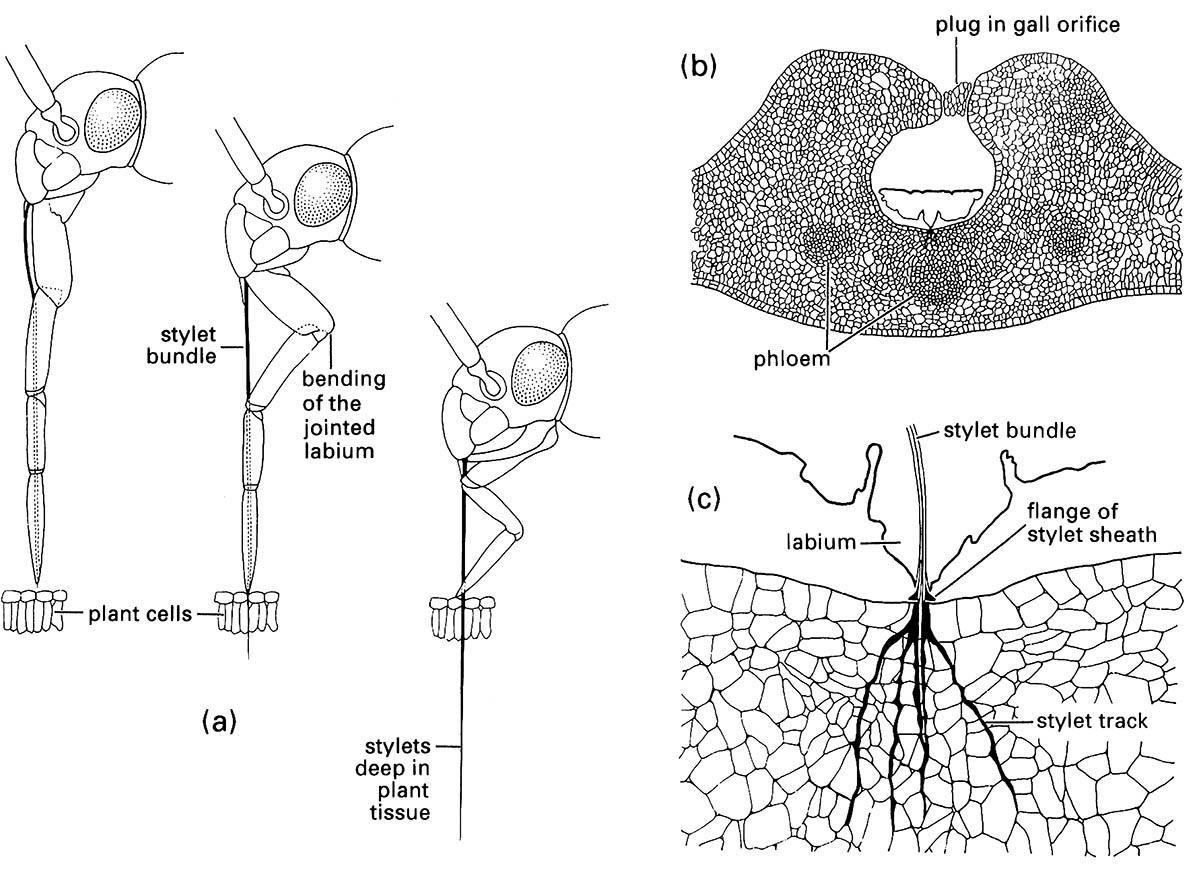Box 3.3. The filter chamber of Hemiptera
Most Hemiptera have an unusual arrangement of the midgut which is related to their habit of feeding on plant fluids. An anterior and a posterior part of the gut (typically involving the midgut) are in intimate contact to allow concentration of the liquid food. This filter chamber allows excess water and relatively small molecules, such as simple sugars, to be passed quickly and directly from the anterior gut to the hindgut, thereby short-circuiting the main absorptive portion of the midgut. Thus, the digestive region is not diluted by water nor congested by superabundant food molecules. Well- developed filter chambers are characteristic of cicadas and spittle bugs, which feed on xylem (sap that is rich in ions, low in organic compounds, and with low osmotic pressure), and leafhoppers and coccoids, which feed on phloem (sap that is rich in nutrients, especially sugars, and with high osmotic pressure). The gut physiology of such sap-suckers has been rather poorly studied because accurate recording of gut fluid composition and osmotic pressure depends on the technically difficult task of taking readings from an intact gut.
Adult female coccoids of gall-inducing Apiomorpha species (Eriococcidae) (section 11.2.4) tap the vascular tissue of the gall wall to obtain phloem sap. Some species have a highly developed filter chamber formed from loops of the anterior midgut and anterior hindgut enclosed within the membranous rectum. Depicted here is the gut of an adult female of A. munita viewed from the ventral side of the body. The thread-like sucking mouthparts (Fig. 11.4c) in series with the cibarial pump connect to a short oesophagus, which can be seen here in both the main drawing and the enlarged lateral view of the filter chamber. The oesophagus terminates at the anterior midgut, which coils upon itself as three loops of the filter chamber. It emerges ventrally and forms a large midgut loop lying free in the hemolymph. Absorption of nutrients occurs in this free loop. The Malpighian tubules enter the gut at the commencement of the ileum, before the ileum enters the filter chamber where it is closely apposed to the much narrower anterior midgut. Within the irregular spiral of the filter chamber, the fluids in the two tubes move in opposite directions (as indicated by the arrows).
The filter chamber of these coccoids apparently transports sugar (perhaps by active pumps) and water (passively) from the anterior midgut to the ileum and then via the narrow colo-rectum to the rectum, from which it is eliminated as honeydew. In A. munita, other than water, the honeydew is mostly sugar (accounting for 80% of the total osmotic pressure of about 550 mOsm kg-1*). Remarkably, the osmotic pressure of the hemolymph (about 300 mOsm kg-1 ) is much lower than that within the filter chamber (about 450 mOsm kg-1 ) and rectum. Maintenance of this large osmotic difference may be facilitated by the impermeability of the rectal wall.
* Osmolarity values are from the unpublished data of P. D. Cooper & A. T. Marshall.


(a) penetration of plant tissue by a mirid bug showing bending of the labium as the stylets enter the plant; (b) transverse section through a eucalypt leaf gall containing a feeding nymph of a scale insect, Apiomorpha (Eriococcidae); (c) enlargement of the feeding site of (b) showing multiple stylet tracks (formed of solidifying saliva) resulting from probing of the parenchyma. ((a) After Poisson 1951)



